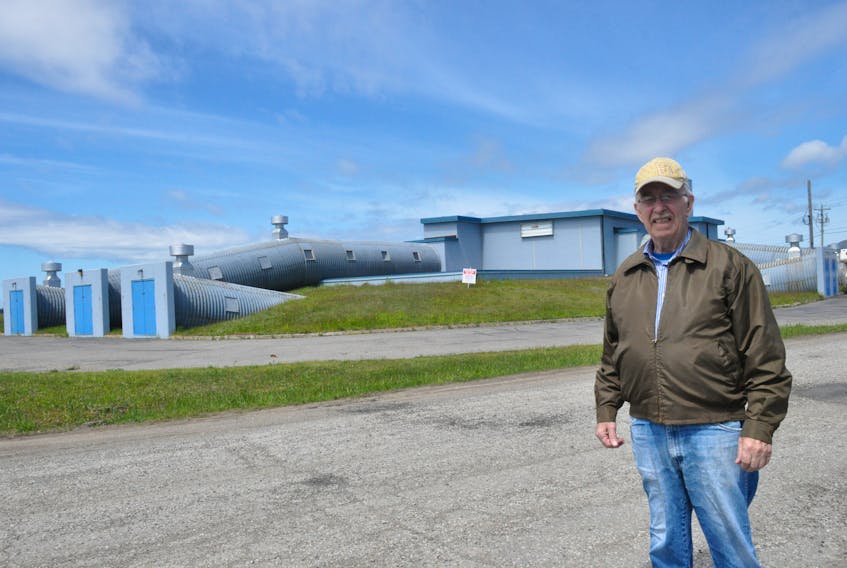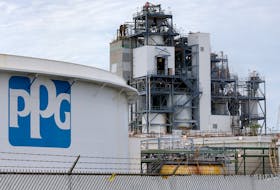Now that the Mole Hole on the former Ernest Harmon Air Force Base is up for sale, Stephenville Mayor Tom Rose is hoping someone in the private sector might purchase it to create a tourism business.
That’s because of the building’s rich military aviation significance dating back to the Cold War years.
Bill Pilgrim, who is a bit of a historian on the local American base, having worked there as a scheduler with the 4081st Civil Engineering Squadron for seven years, agrees the Mole Hole building has a certain interest because of its construction.
“It’s a peculiar design and leaves people to think of whether it was some sort of secret facility,” he said.
Pilgrim originally started working on the base in 1965 at the age of 18, spent four years in Ontario working, then at age 22 returned home and got his job back until its closing in 1966.
He said the Mole Hole, which is partially a subsurface structure, was constructed specifically to house crews for about eight aircraft.
“This was their readiness building with sleeping and feeding quarters for aircraft crews that were on shift,” Pilgrim, who is now 80 years old, said.
He said normal shifts were for a week before another shift would come on. There were station wagons waiting outside the doors of every chute (14 of them in total) ready to take the crews to their nearby planes if the alarm went off.
The crews from this facility would be the first into the air and others would follow as there were always about 50 of these refueling aircraft, the Boeing KC-97 positioned on the base, 40 of them on the East Ramp and another 10 on the West Ramp, close to where Stephenville airport is located today.
Pilgrim said in the Cold War years, there was a continuous stream of American jet bombers with nuclear weapons aboard that would leave from various bases in the United States, fly up and over the North Pole and head towards Russia.
He said the role of the air bases in Stephenville and in Happy Valley-Goose Bay was to refuel these planes while they were in flight.
During the operation of the base there was also an interceptor squadron with a number of fighter jets stationed at the east end of the runway in an alert hangar.
Pilgrim said the Mole Hole was built to withstand some blast protection from a “near miss” by a nuclear weapon.
He said the building has held up well considering it’s more than 60 years old.
Rose said with the development of the town’s U.S. military history and promoting tourism development, he feels the time is right for a would-be entrepreneur to capitalize on the Mole Hole facility.
He pointed to the Diefenbunker Museum – Canada’s Cold War Museum located in Carp on the outskirts of Ottawa, which is a famous tourist destination.
“I feel the Mole Hole could work in the same type of way, on a smaller scale,” Rose said.









